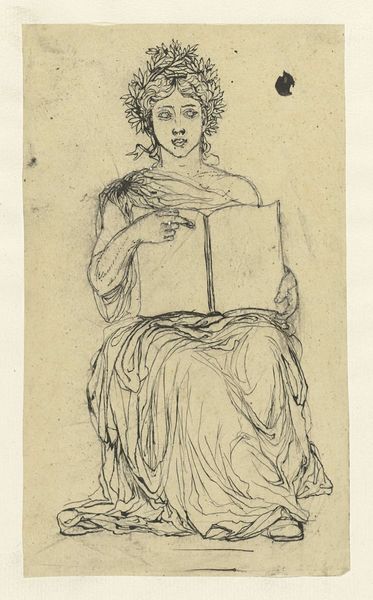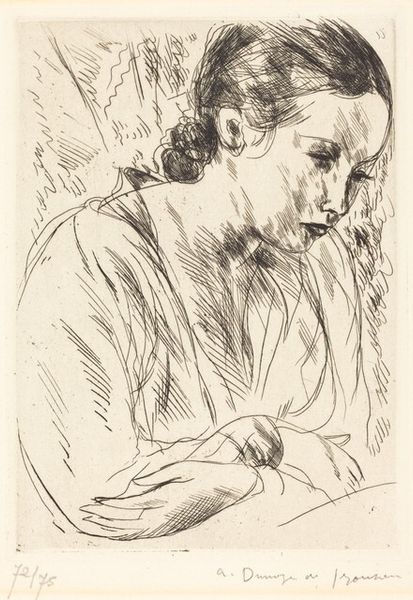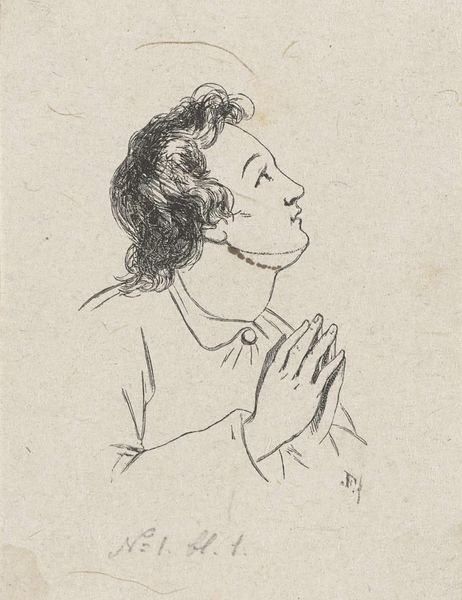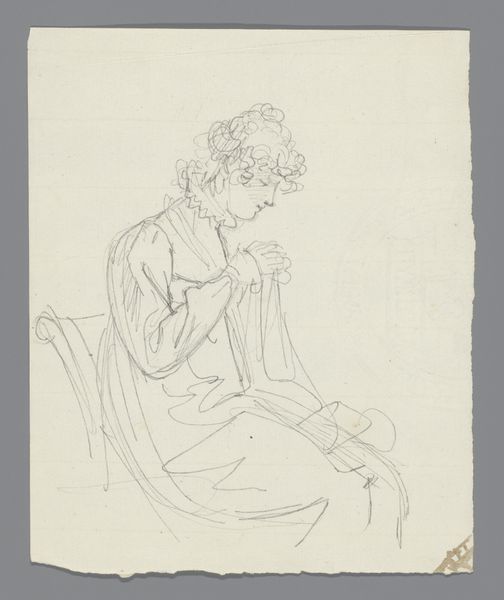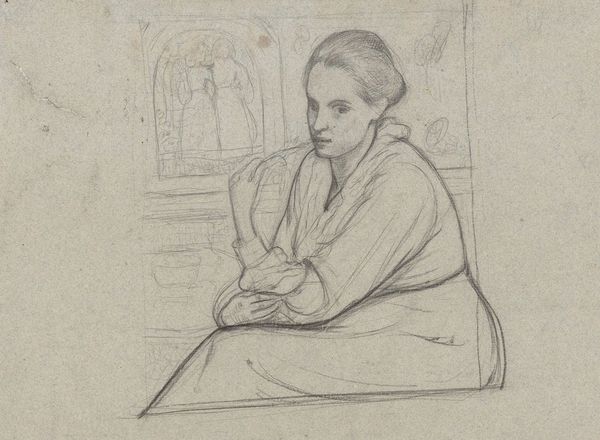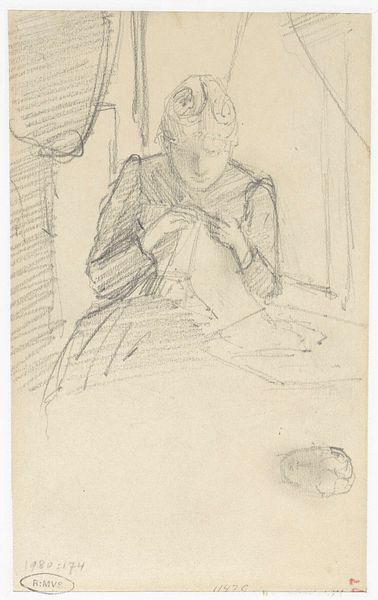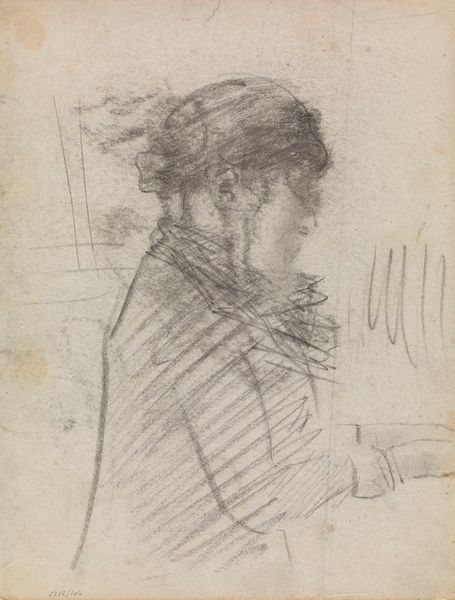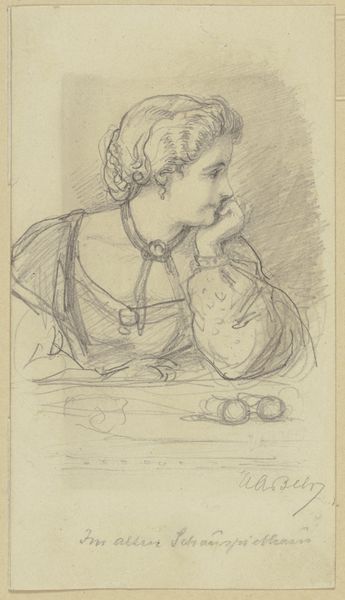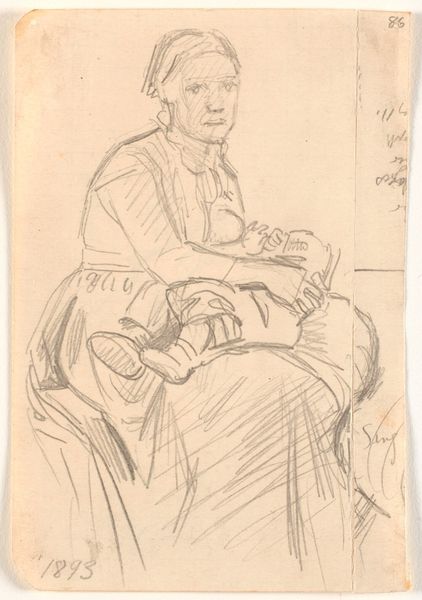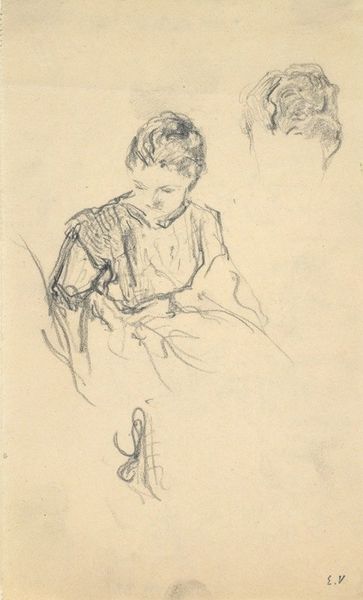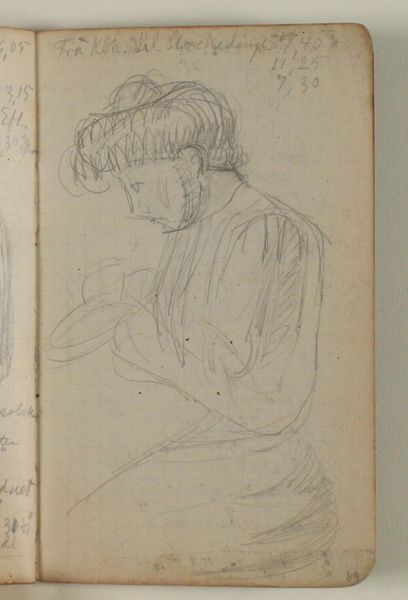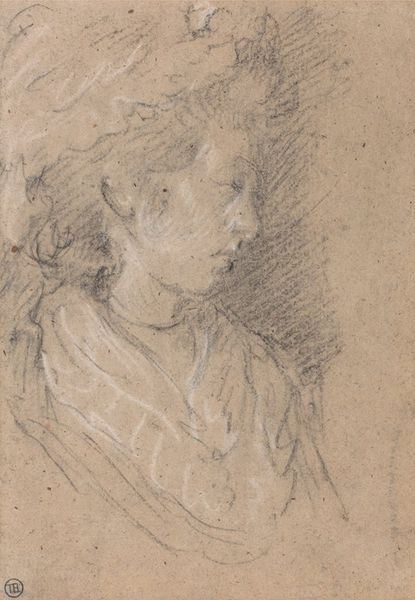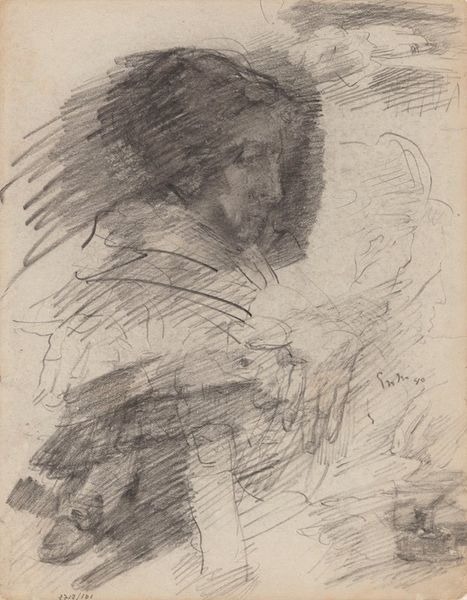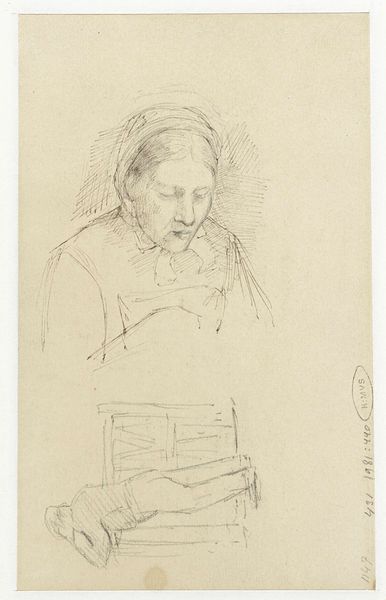
Dimensions: height 84 mm, width 52 mm
Copyright: Rijks Museum: Open Domain
Curator: Here we see George Hendrik Breitner’s “Vrouw, mogelijk naaiend,” or “Woman, possibly sewing,” created sometime between 1886 and 1923. The artist worked primarily in the Netherlands. Editor: The quietude is remarkable. Even in the looseness of this pencil sketch, I feel a palpable sense of interiority. Curator: Absolutely. We must contextualize this with the rise of Impressionism and Realism. Breitner was fascinated with capturing the everyday lives of ordinary people. The artistic freedom he took in his practice was reflective of the social changes occurring in this period, one where gender and class were beginning to be understood more deeply, at least intellectually, although clearly much more work had to be done to make for real social equity. Editor: Look at how her hands are rendered. Intertwined, almost nervous. There’s an emotional weight carried in those simple lines. We understand something of her mood, even her psychology in that singular element. In certain symbolic interpretations of art, the action of sewing might signal weaving together a fragmented self. I see a soul trying to mend something within or without, while the eyes remain cast down toward an uncertain future. Curator: It is equally essential to discuss the woman's role, her subjugated status within a rapidly industrializing society, the limited options she was afforded… sewing here may also connote both tedious domestic work, but maybe as well, resistance to capitalism's discontents. In my reading, the drawing seems to embrace intersectional feminist concerns, acknowledging that women must overcome exploitation, that they must forge their paths even within restricted confines, that the system oppresses them… Editor: Yes, it also suggests both endurance and creativity, of creating and persevering simultaneously. It is about the timeless universality of human craftsmanship, but also more immediately, about self-care. This subtle portrait provides not only a glimpse into Dutch society during a transformative period but a meditation on psychological survival as well. Curator: Thank you, that resonates well, and it inspires fresh interpretations. What you've added really underscores why this sketch from Breitner is a crucial inclusion to our exhibit on ordinary, yet vital stories of labor during this era.
Comments
No comments
Be the first to comment and join the conversation on the ultimate creative platform.
